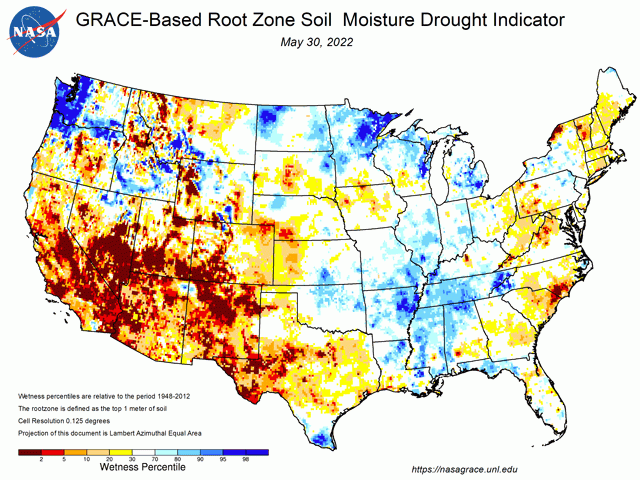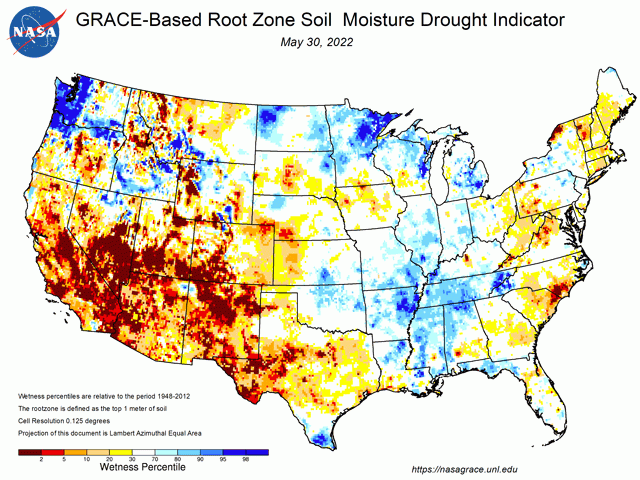Ag Weather Forum
Key Period for Soil Moisture and Crop Root Growth
As row crops go through the early weeks of summer, there's some very important foundational work going on beneath the soil surface. That, of course, is the development of the crop root structure. Roots are extremely important to crop welfare and production. A strong root system can anchor the plant and help prevent damage or loss from harsh winds; and, of course, the root system is where the crop food chain begins with the roots taking in soil nutrients and moisture.
There's plenty of development below the surface, too. A corn plant can reach 8 feet high, but underground, a well-developed root system can reach a depth of 6 feet with favorable moisture. And, by the time the corn plant reaches the sixth-leaf stage, roots in 30-inch rows will merge, adding to plant stability and nutrient intake.
As with almost any environment, too much of one feature or another can drastically affect the individual's response -- in this case, crop root development. In corn, slightly dry conditions in the corn plant's early stage can actually encourage deeper early root growth.
P[L1] D[0x0] M[300x250] OOP[F] ADUNIT[] T[]
But, if a drought is going on and the soil is too dry, the roots will wither and die out. In addition, brace root development will be more limited, leading to a weaker plant with more vulnerability to lodging and being toppled by strong winds. A third negative impact from drought on root development is that drought inhibits the plant's ability to make full use of fertilizer and other available nutrients -- which ultimately result in lower yields.
On the other hand, research into root formation on corn has found that root development ceases -- brakes on, full stop -- when the developing roots hit a water table. Thus, the concern voiced about shallow-rooted corn when spring rains are heavy and the soil profile is saturated. Such a circumstance may pose a real limiting factor on the corn plant's root journey to that 6-foot depth.
Prime time for root development is now through early July, or during corn vegetative stages up through pollination. There will still be some additional root growth after pollination, but the majority of the root system formation is going on in June.
Soil moisture analysis shows that in the Midwest, root zone conditions are variable. Recently well-publicized wet areas of the northern Midwest and extremely dry areas of the southwestern Plains stand out as bookends for either too much or too little moisture. In the central U.S., it's a more mixed affair, with neither wet nor dry soils indicated over large segments. This variable scenario suggests a favorable environment for central U.S. crop root development. With a forecast indicating hotter and drier conditions during the balance of the summer, this feature will be very important to realizing the strong yields projected for row crops in this 2022 season.
Additional details on corn root development are available here: https://crops.extension.iastate.edu/… and https://www.pioneer.com/….
Bryce Anderson can be reached at Bryce.anderson@dtn.com
Follow him on Twitter @BAndersonDTN
(c) Copyright 2022 DTN, LLC. All rights reserved.






Comments
To comment, please Log In or Join our Community .